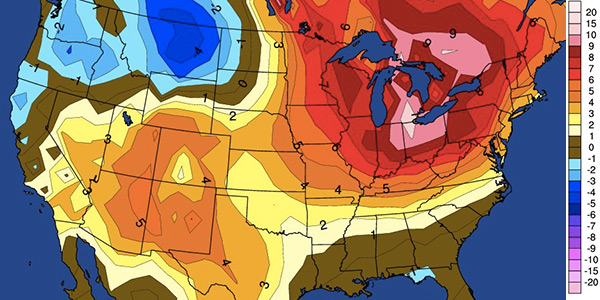NYISO has formed a selection subcommittee to find replacements for board members Tom Ryan and Jim Mahoney, whose terms are expiring, CEO Rich Dewey told the Management Committee on Wednesday.
“The process will be very similar to what we’ve done in the past, with the exception of the complications we have as a result of the pandemic and potential restrictions on when and how we can conduct the various interviews,” Dewey said. “If we need to push things a little bit later to accommodate a more effective in-person interview as opposed to doing it online, we will.”
Even if the process is delayed a couple months, the intent is still to have the new members on the board in April, he said.
Demand Curve Reset
The Analysis Group’s final report on the demand curve reset will be posted next week for review at upcoming meetings, along with the ISO management’s draft report, Dewey said. He encouraged people to read and offer feedback on the reports by the August 24 deadline, ahead of discussion at stakeholder meetings in October and a FERC filing in November.
Dewey also mentioned stakeholder concerns that projects coming through the pipeline were appropriately included in consumer impact analyses.
As part of its Grid in Transition initiative, the ISO in April recommended that it implement market design changes through 2024 regarding carbon pricing; comprehensive mitigation review; participation models for distributed energy and storage resources; enhancement of energy and shortage pricing; energy and ancillary services product design review; enhancement of resource adequacy models; revision of resource capacity ratings to reflect reliability contribution; and adjustment of capacity demand curves. (See “Planning the Future Grid” in NYISO Launches Fuel Security Effort.)
Dewey said the ISO had attempted to speed up project development by working on the items piecemeal, but some market participants requested a package approach instead, which the ISO will do.
He said they are committed to doing the impact analyses for the grid reliability and resilience and ancillary service shortage pricing initiatives and getting them to the market participants in the first part of September.
The last item Dewey brought up was the ISO’s project prioritization process in conjunction with the budget.
Because of a “very challenging” budget this year, Dewey said the ISO will not be able to complete implementation of its distributed energy resources software by the 2021 completion date. “So, we are going to move it to 2022,” he said.
Given the “challenging year,” the Management Committee also voted not to conduct a new cost of service study during late 2020-2021 to help determine whether to modify the 72%/28% cost allocation between withdrawal billing units and injection billing units.
Hot Weather Operations OK
The ISO has been operating satisfactorily through the heat and humidity of recent weeks, its first summer without Indian Point Two, the Somerset coal station in western New York, and the Cayuga generating facility north of Ithaca, said Vice President of Operations Wes Yeomans. “And we’re gaining operating experience with the very brand-new Cricket Valley 1,000 MW combined cycle plant … so we thought this would be an interesting summer,” he said.

A heat wave from July 4 to 11 caused record-tying high temperatures in the Syracuse, Rochester and Buffalo areas and a peak load of 29,902 MW, which was surpassed July 27 with a peak of 30,660 MW when another heat wave hit New York City. | NYISO
The state has had three heat waves in July — defined as three consecutive days of 90 degrees. “It feels like they’re all blending together at this point,” Yeomans said.
The first heat wave, between July 4 and 11, hit upstate in the Syracuse, Rochester and Buffalo areas, with cooler weather downstate. Buffalo hit 97 degrees for only the third time in 100 years. Syracuse had seven consecutive days over 90, only the fourth time that has happened in the last century, Yeomans said. The state saw a peak of 29,902 MW.
That changed later in the month with higher temperatures in southeastern New York, Long Island and New York City, he said.
A short heat wave in mid-July ended with a tropical storm across New York City, Long Island and Connecticut, which passed quickly “and was basically a non-event for the bulk power system,” Yeomans said.
The third wave in late July resulted in a peak of 30,660 MW on July 27. “At this point in time that’s the summer peak for 2020, but there’s still a lot of summer ahead of us, and we may exceed that,” he said.
The performance of the generation and transmission system infrastructure has been “fantastic,” he said, promising a more comprehensive hot weather operations presentation at the September Operating and Management committee meetings.


